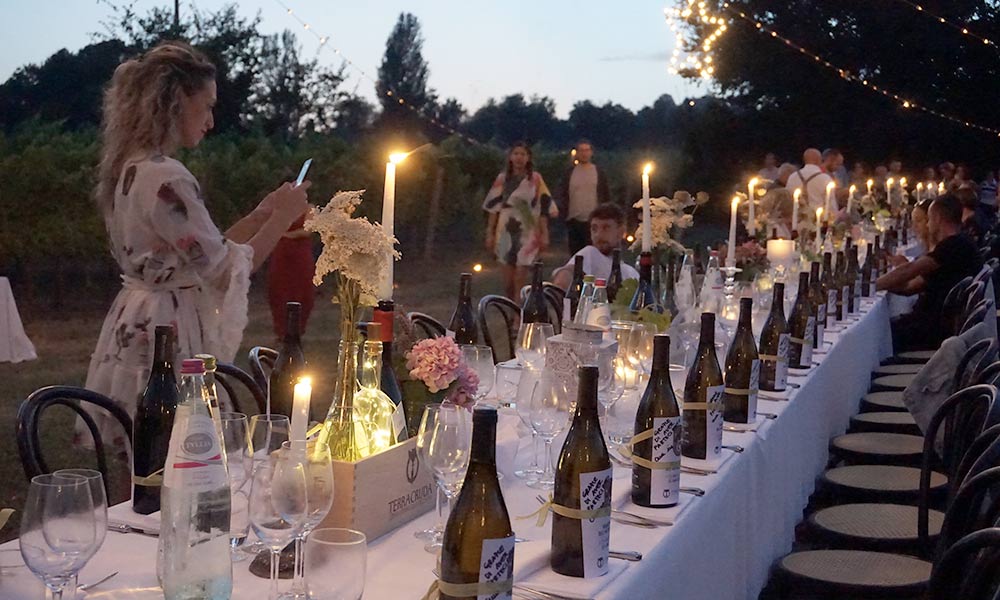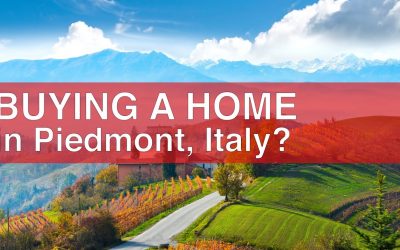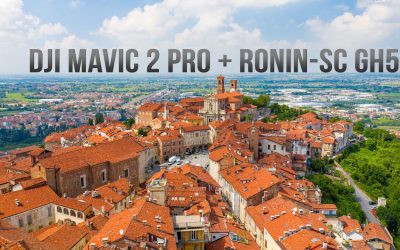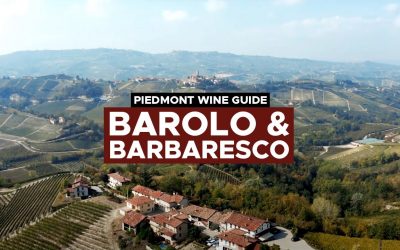Wine Tourism in Piedmont, Italy: Discover Langhe area near Alba
Whether you’re a seasoned wine connoisseur, a passionate enthusiast, or simply curious about wine and viticulture, this comprehensive guide to wine tourism in Piedmont is designed for you. Embark on a journey through Piedmont’s renowned winemaking regions, including Langhe, Roero, and Monferrato, and immerse yourself in the local culture, traditions, and community.
As we highlighted in our “Summer in Langhe, Piedmont“, this region, with its idyllic landscapes and award-winning wines, is a destination that effortlessly captivates the hearts of wine lovers. The Langhe region, celebrated for its world-class Barolo and Barbaresco wines, offers visitors a delightful blend of aesthetic appeal and sensory pleasure. Here, you can tour historic wineries, meet passionate local producers, and learn about a wine culture steeped in centuries-old traditions.
Who Is This Guide For?
Visiting a winery in the Langhe region means immersing yourself in the local culture, traditions, and community. The majority of these businesses are small-scale, often run by the producers themselves, giving you a unique opportunity to connect directly with the people who craft these outstanding wines. Tours will take you to winemaking and aging premises, vineyards (weather permitting), and usually culminate in a guided tasting often paired with locally produced snacks or full meals.
Wine Tourism in Piedmont
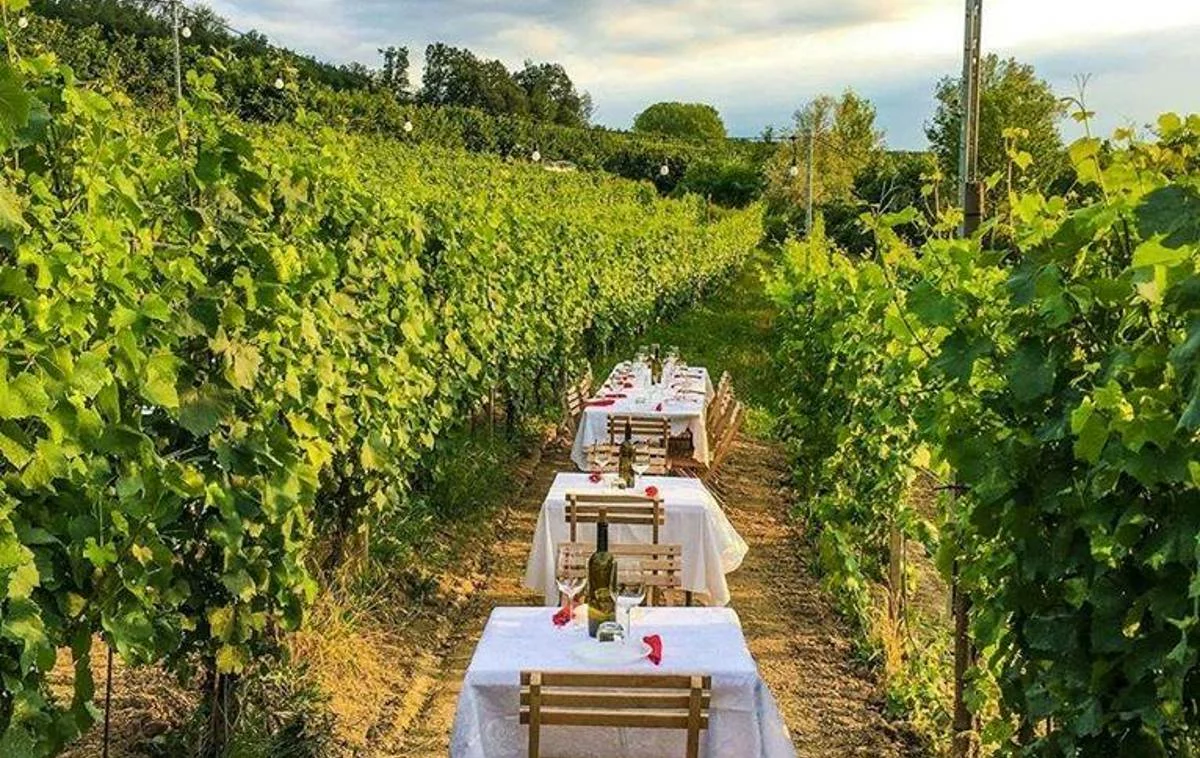
The Langhe region, renowned for its world-class Barolo and Barbaresco wines, blends aesthetic appeal with sensory delight. Amidst the rolling vineyards and evocative landscapes, you’ll encounter historic wineries, passionate local producers, and a wine culture deeply rooted in centuries-old traditions.
In Roero, you’ll find a lesser-known yet captivating wine journey. Defined by sandy cliffs, biodiversity, and idyllic vineyard landscapes, Roero’s wine tourism experience is underscored by its unique white wine – Roero Arneis. The region invites exploration beyond the vineyards into its charming villages and striking castles.
Monferrato, the largest wine-producing area in Piedmont, is a mosaic of diverse microclimates and terroirs, giving birth to a wide array of wines, including the bold Barbera d’Asti, the delicate Dolcetto d’Acqui, and the effervescent Moscato d’Asti. Wine tourism here transcends the usual, providing a holistic immersion into Piedmont’s rich viticulture heritage.
10 FAQs and Keypoints:
Visiting wineries in Piedmont can be achieved independently or via guided tours. For individual visits, a car rental and prior appointments for tastings are often necessary. Guided tours provide a hassle-free alternative, including transportation, arranged tastings, and a guide’s expertise. Prominent wineries in Piedmont include E. Pira & Figli, Cordero di Montezemolo, Podere Rocche de Manzoni, and La Spinetta.
Piedmont is renowned for its wines, specifically Barolo and Barbaresco, made from the Nebbiolo grape. These wines are appreciated worldwide for their depth, complexity, and ageing ability. A stay of three to five days is generally recommended to fully experience Piedmont’s vineyards, culinary scene, and stunning landscapes. Lastly, reservations are typically required for winery visits in Italy, ensuring availability for tours or tasting sessions.
- How do you visit wineries in Piedmont? Visiting wineries in Piedmont can be done either independently or through guided tours. If you prefer to go at your own pace, you can rent a car and visit wineries directly. However, remember that appointments are often necessary for tastings. For a stress-free experience, consider guided tours. They often provide transportation, pre-arranged appointments, and the added bonus of a knowledgeable guide.
- Which vineyards to visit in Piedmont? With so many outstanding wineries in Piedmont, it’s hard to choose just a few. Some highly recommended ones include E. Pira & Figli known for their exceptional Barolo, Cordero di Montezemolo with its picturesque vineyards, Podere Rocche de Manzoni renowned for their variety, and La Spinetta famous for Moscato d’Asti.
- What wine is Piemonte famous for? Piedmont is globally recognized for its exceptional wines, particularly Barolo and Barbaresco, which are produced from the Nebbiolo grape. These wines are known for their depth, complexity, and ageing potential.
- What are Italy’s Piedmont region’s two most famous red wines? The two most famous red wines from Italy’s Piedmont region are undoubtedly Barolo and Barbaresco. Both are made from the Nebbiolo grape and are renowned for their quality, complexity, and ability to age gracefully.
- How many days do you need in Piedmont? The number of days you need in Piedmont can vary depending on your interests. However, a minimum of three to five days is often recommended to fully explore the region, including its vineyards, culinary offerings, and beautiful countryside.
- Do you need reservations for wineries in Italy? Yes, in most cases, you need to make reservations to visit wineries in Italy, especially for a tour or a tasting session. While some wineries may accommodate walk-ins, it’s always best to book in advance to ensure availability. Contact us for customize tour wine tour in Langhe, Roero and Monferrato.
Wine Tourism in Langhe: A Blend of Tradition and Excellence
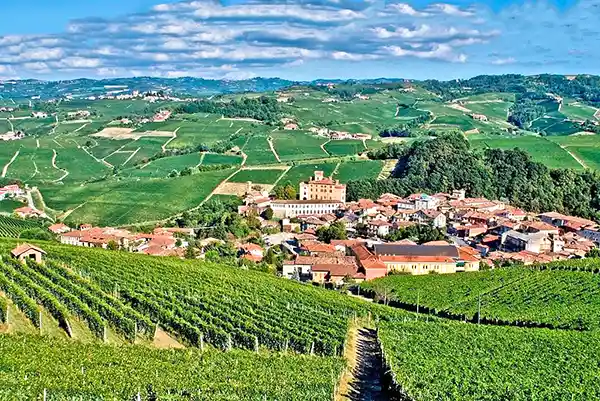
Known for its outstanding wines and picturesque landscapes, Langhe offers a unique wine tourism experience. As you traverse the rolling hills and scenic vineyards, you’ll get the opportunity to meet local producers, visit historic wineries, and taste some of the finest wines in Italy. Langhe is particularly famous for its Barolo and Barbaresco wines, often considered among the best in the world.
Wine Tourism in Roero: A Taste of Authenticity
For those seeking lesser-known yet equally captivating wine experiences, Roero is a destination not to be overlooked. Defined by its sandy cliffs and rich biodiversity, Roero produces excellent wines such as Roero Arneis, a crisp white wine with fruity and floral notes. Roero also offers a distinct wine tourism experience, with its charming villages, imposing castles, and friendly, inviting wineries.
Wine Tourism in Monferrato: The Heart of Piedmont’s Wine Heritage
Last but not least, Monferrato is the largest wine-producing area in Piedmont. Its diverse microclimates and terroirs give rise to a wide variety of wines, including Barbera d’Asti, Dolcetto d’Acqui, and Moscato d’Asti. With its deep-rooted viticulture traditions, Monferrato provides a genuine, immersive wine tourism experience, allowing visitors to explore expansive vineyards, taste exquisite wines, and learn about the region’s rich wine heritage.
Who Is This Guide For? – Unleashing the Joys of Wine Tourism
This guide to wine tourism in Piedmont is for anyone who wishes to delve deeper into the world of wine. It offers a unique opportunity to connect directly with the people behind these extraordinary wines, understand the process from vineyard to glass, and appreciate the rich history and culture of the Piedmont wine region. Whether you’re planning your first wine tour or are a seasoned wine tourist, this guide will help you explore Piedmont’s wine country like never before.
Practical Information
Most Langhe wineries are small operations, frequently located within the producer’s own home. Reservations are highly recommended to ensure a seamless experience. It’s also important to communicate any cancellations to allow others to take your place. Remember that each winery has its own distinct character and ambiance, ranging from informal, family-run businesses to more structured setups. Purchasing wine directly from the winery usually offers reduced prices compared to the market, but not all producers accept cards, so bringing cash can be helpful.
What should I not miss in piedmont region Italy?
The Piedmont region of Italy offers a wealth of unique experiences and attractions. Here are some that you should not miss:
- Turin: The region’s capital city, Turin is known for its rich history, architecture, and culture. Don’t miss the Egyptian Museum, the second largest of its kind in the world, and the Mole Antonelliana, a landmark building with a museum of cinema inside.
- Barolo and Barbaresco wine regions: These two areas are must-visit destinations for any wine lover. Take a tour through the vineyards, enjoy wine tastings, and learn about the process of making these world-famous wines.
- Lake Maggiore: This picturesque lake offers stunning views, beautiful islands, and charming towns to explore such as Stresa and Verbania. The Borromean Islands are also worth a visit.
- Langhe-Roero and Monferrato: These areas are UNESCO World Heritage Sites for their cultural landscapes, with vineyard-covered rolling hills, ancient castles, and picturesque villages. The towns of Alba, known for its white truffles, and Asti, known for its sparkling wine, are both located here.
- Sacri Monti: The Sacred Mountains of Piedmont and Lombardy are a series of nine groups of chapels and other architectural features created in the late 16th and 17th centuries and dedicated to various aspects of the Christian faith.
- Val Grande National Park: This is the largest wilderness area in Italy, ideal for hiking, wildlife viewing, and enjoying the beautiful natural scenery.
- Local Cuisine: Piedmont is famous for its food. Try local dishes like “bagna càuda” (a warm dip made with garlic, anchovies, olive oil, and butter), “agnolotti” (meat-stuffed pasta), and “bonet” (a caramel and amaretto dessert), and don’t forget to sample the renowned white truffles of Alba.
Remember to plan ahead and check the opening hours of museums, restaurants, and wineries to make the most of your visit to Piedmont.
Wineries Opening Their Doors
Many wineries in the Langhe region open their doors for special occasions, providing an educational opportunity to meet the producers and learn about their history and tradition. Visit types vary, ranging from simple tastings (always accompanied by local products) to full meals in the cellar. While events may not be translated into English, producers can provide detailed explanations of their offerings if contacted directly.
Meet the Producers in Langhe
The Langhe region is home to over 12,000 DOC and DOCG labels, providing an unlimited selection for your cellar experiences. Whether you’re a beginner, an expert, or an explorer, this guide will help you navigate your way through the Langhe wine landscape, understand its history, and appreciate the farming culture that gives life to its world-renowned wines. The guide also includes an in-depth look at the wine-producing areas of lower Piedmont and the wines they are known for.
In the Langhe, wine tourism is about more than just wine. It’s an invitation to learn, explore, and connect with a rich and vibrant culture, one glass at a time.
Wine Tourism in Piedmont – An Unforgettable Experience
Are you planning a wine tour in Italy? Look no further than Piedmont, a captivating region known for its high-quality wines, stunning vineyard landscapes, and rich viticultural heritage. Home to renowned wine-making areas like Langhe, Roero, and Monferrato, Piedmont offers a unique experience that is bound to satiate any wine lover’s desires. Imagine strolling through lush vineyards, learning about the wine-making process from passionate local producers, and savoring world-class wines such as Barolo and Barbaresco. That’s the magic of wine tourism in Piedmont.
A Taste of Piedmont – A Perfect Blend of Wine and Culture
Wine tourism in Piedmont is not just about tasting excellent wines. It’s about immersing oneself in the region’s culture, history, and traditions. Picture this: You start your day in a vineyard in Langhe, where the producer takes you on a journey from grape to glass. Then you head to Roero for a refreshing taste of their white wines and a walk through their characteristic sandy cliffs. Finally, as the day draws to a close, you find yourself in Monferrato, tasting a variety of wines from Barbera d’Asti to Moscato d’Asti. As you sip on these exquisite wines, you can’t help but marvel at the region’s viticultural richness. That’s the essence of wine tourism in Piedmont.
